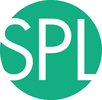Documentation/Nightly/Modules/DWIToDTIEstimation
Introduction and Acknowledgements
|
This work is part of the National Alliance for Medical Image Computing (NA-MIC), funded by the National Institutes of Health through the NIH Roadmap for Medical Research, Grant U54 EB005149. Information on NA-MIC can be obtained from the NA-MIC website. | |||||
|
Module Description
Estimates the diffusion tensor model from diffusion weighted images.
There are two estimation methods available: least squares and weighted least squares. Least squares is the traditional method for tensor estimation and the fastest one. Weighted least squares takes into account the noise characteristics of the MRI images to weight the DWI samples based on their intensity magnitude.
Use Cases
- Use Case 1: Calculate the Diffusion Tensor image from a Diffusion Weighted image.
Tutorials
Slicer 4 Diffusion Tensor Tutorial
Panels and their use
Parameters:
- IO: Input/output parameters
- Input DWI Volume (inputVolume): Input Diffusion Weighted Image (DWI) volume
- Input Brain Mask (inputMaskVolume): Brain mask to restrict tensor computation region [optional]
- Output DTI Volume (outputTensor): Estimated Diffusion Tensor Image (DTI) volume
- Output Baseline Volume (outputBaseline): Estimated baseline (non-Diffusion Weighted) volume
- Advanced Settings: Advanced estimation settings
- Fitting Method ([Weighted] Least Squares) (estimationMethod): Fitting method. LS: Least Squares, WLS: Weighted Least Squares
- Shift Negative Eigenvalues (ShiftNegativeEigenvalues): Shift eigenvalues so all are positive (accounts for unuseable tensor solutions related to noise or acquisition error)
List of parameters generated transforming this XML file using this XSL file. To update the URL of the XML file, edit this page.
Similar Modules
- Point to other modules that have similar functionality
References
- Basser, P. J., Pajevic, S., Pierpaoli, C., Duda, J., & Aldroubi, A. (2000). In vivo fiber tractography using DT-MRI data. Magnetic Resonance in Medicine, 44(4), 625-632. John Wiley & Sons, Inc. Retrieved from http://www.ncbi.nlm.nih.gov/pubmed/11025519
Information for Developers
| Section under construction. |

